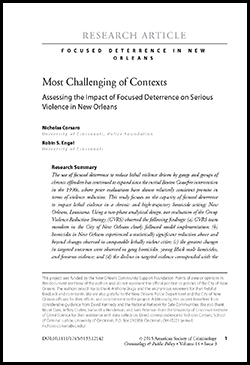
The use of focused deterrence to reduce lethal violence driven by gangs and groups of chronic offenders has continued to expand since the initial Boston Ceasefire intervention in the 1990s, where prior evaluations have shown relatively consistent promise in terms of violence reduction. This study focuses on the capacity of focused deterrence to impact lethal violence in a chronic and high-trajectory homicide setting: New Orleans, Louisiana. Using a two-phase analytical design, our evaluation of the Group Violence Reduction Strategy (GVRS) observed the following findings: (a) GVRS team members in the City of New Orleans closely followed model implementation; (b) homicides in New Orleans experienced a statistically significant reduction above and beyond changes observed in comparable lethally violent cities; (c) the greatest changes in targeted outcomes were observed in gang homicides, young Black male homicides, and firearms violence; and (d) the decline in targeted violence corresponded with the implementation of the pulling levers notification meetings. Moreover, the observed reduction in crime outcomes was not empirically associated with a complementary violence-reduction strategy that was simultaneously implemented in a small geographic area within the city.
